Reverse reverb is an innovative and captivating sound effect in the world of music production.
It can transform a simple melody into an ethereal soundscape, create a sense of anticipation in your mix, and add a dramatic flair to your tracks.
As well as being a favorite technique among genres like shoegaze music and psychedelic rock, it’s also found its way into mainstream pop and electronic music.
So, as a music producer, it’s important to know all about reverse reverb in order to elevate your tracks and enhance your sounds.
Plus, it will help you stand out in the competitive world of music production.
In today’s article, we’ll break down:
- Understanding the basics of reverse reverb ✓
- Key components and how they affect your sounds ✓
- The impact of the best reverse reverb pedals ✓
- Digital alternatives for reverse reverb ✓
- Techniques for mixing vocals ✓
- Enhancing instrumental tracks ✓
- Mastering decay time and reverb tail ✓
- Balancing with other effects ✓
- The art of reverse echo and regeneration ✓
- Using gated reverbs ✓
- Managing overpowering reverb tails ✓
- Much more about reverse reverb ✓
By the end of this article, you’ll have a deep understanding of reverse reverb, equipped with the knowledge to implement it effectively in your mixes.
You’ll be able to add unique and captivating elements to your tracks, and manipulate sounds like a professional, taking your music production skills to new heights.
So, let’s dive in…
Table of Contents
What is Reverse Reverb & How Does It Work?

Reverse reverb, a technique where the reverb tail precedes the original signal, creates a distinctive and ethereal sound in music production.
It’s like hearing a note or vocal line emerge from a sonic mist 一 gradually becoming clearer and more fluid.
This reverse effect, a staple in genres like shoegaze and psychedelic rock, adds a unique dimension to tracks.
The process involves reversing the audio track, applying reverb (typically a dense and long decay) and then reversing it again.
The outcome is a unique sound that seems to swell up to the moment of the actual note or beat.
This method, which you can hear used by bands like Pink Floyd and Led Zeppelin, adds a dramatic and haunting quality to music.
Understanding the basics of reverse reverb opens up a world of creative possibilities you can play arond with.
Whether you’re a digital music producer or experimenting with analog setups, mastering this effect can transform your soundscapes.
Therefore, making them more dynamic and emotionally resonant.
Key Components of Reverse Reverb
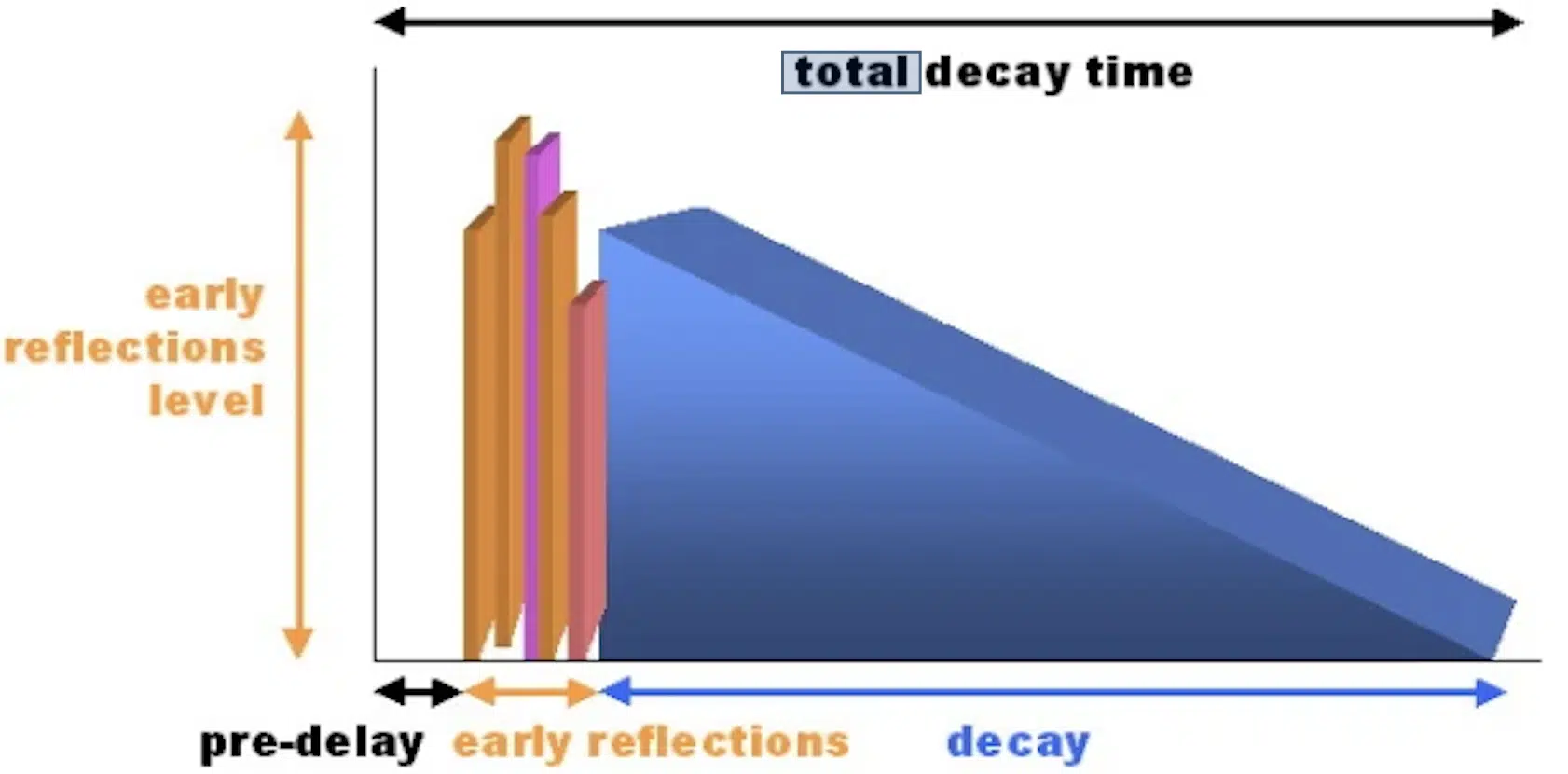
The key to effective reverse reverb lies in the selection of reverb type, reverb mode, and manipulation of its parameters.
A dense reverb with a long decay time works best, as it creates a more pronounced and impactful reverse effect.
The intensity of the reverb tail is crucial.
It should be:
- Strong enough to be noticeable when reversed (reversed reverb).
- Not so overwhelming that it obscures the original signal.
The first word that should come to mind when you think of reverse reverb is ‘balance,’ like in the nursery recording Ten Little Indians.
Another critical component when it comes to any reverse function is the blend or mix setting.
Balancing the dry sound and the effected sound ensures that the reverse reverb adds to the track without overpowering it.
This balance is particularly important in digital music production, where precision and control over sound elements are key.
Techniques for Mixing Vocals with Reverse Reverb
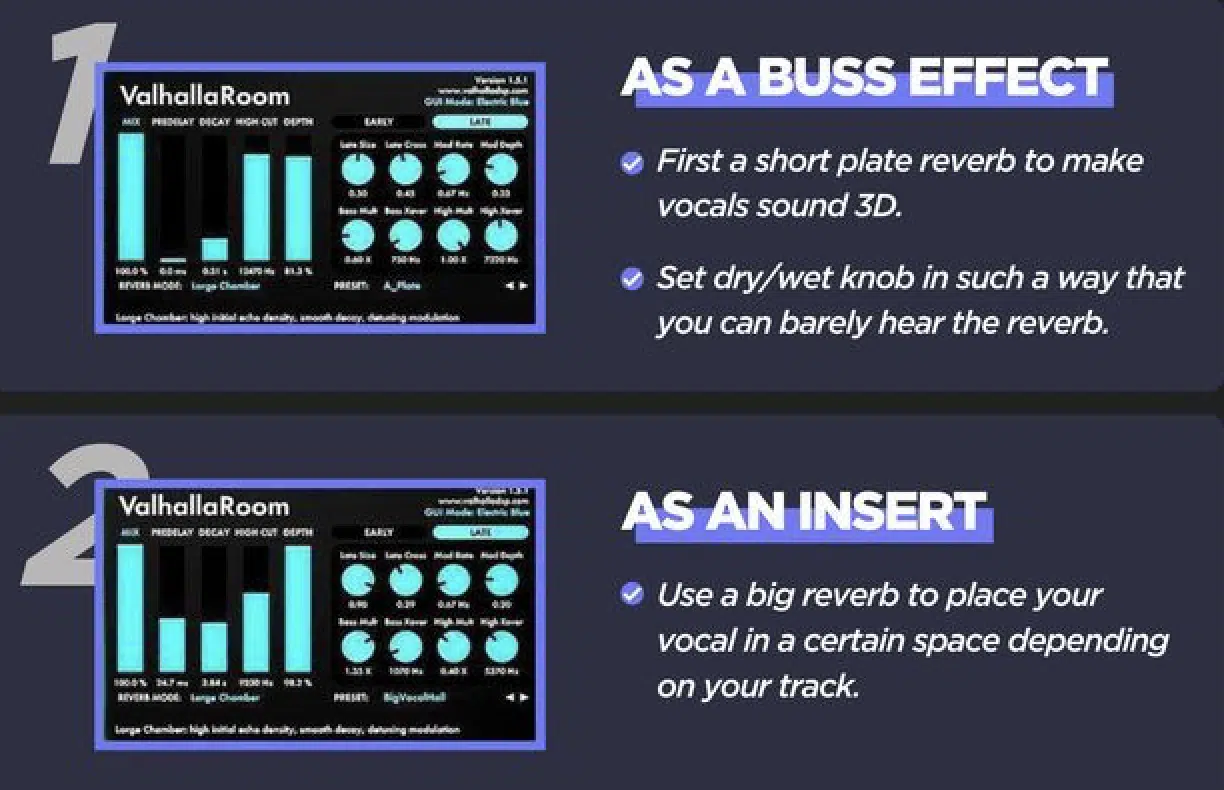
Mixing vocals with reverse reverb is an art that can elevate your track to new heights.
When applied to a vocal track, reverse reverb creates a mesmerizing prelude to the lyrics, drawing listeners into the song.
To achieve this:
- Isolate a key phrase or word in the vocals.
- Apply it specifically to these segments to create a focal point.
This music production technique, used effectively in tracks by artists like Led Zeppelin (or the nursery rhyme Ten Little Indians), adds a dramatic and haunting element.
It’s essential to maintain clarity of the lyrics while using the reverse effect, so adjusting the blend between the dry sound and the reverse reverb is crucial.
Aim for a modulated tone that enhances the vocal track without overwhelming it.
The choice of reverb modes plays a significant role here.
A reverse reverb pedal or reverb software with various reverb options, including hall, plate, or spring modes, can offer distinct flavors.
For example, a hall mode gives a more expansive and airy feel, suitable for ambient or cinematic vocal tracks.
While, conversely, a plate mode provides a denser texture, ideal for rock or pop vocals.
Make sure to play around with different decay times and the length of the reverb tail to match the rhythm and mood of the song.
- Shorter decay times 一 Can add a subtle sense of space.
- Longer decay times 一 Create a more pronounced reverse reverb effect that can be particularly impactful in slower, more emotive sections of a song.
An advanced function/technique involves using automation to vary the intensity of the reverse reverb across different parts of the song.
Automating the mix level of the reverse reverb to increase during a chorus or bridge can make these sections stand out, adding an extra layer of depth to the vocals.
Conversely, reducing the reverse reverb in verses or more lyrically dense sections can help maintain focus on the words.
Integrating reverse echo or reverse regeneration in tandem with the reverse reverb can create a rich, multi-layered effect.
This will add complexity and texture to your vocal track.
-
Enhancing Instrumental Tracks
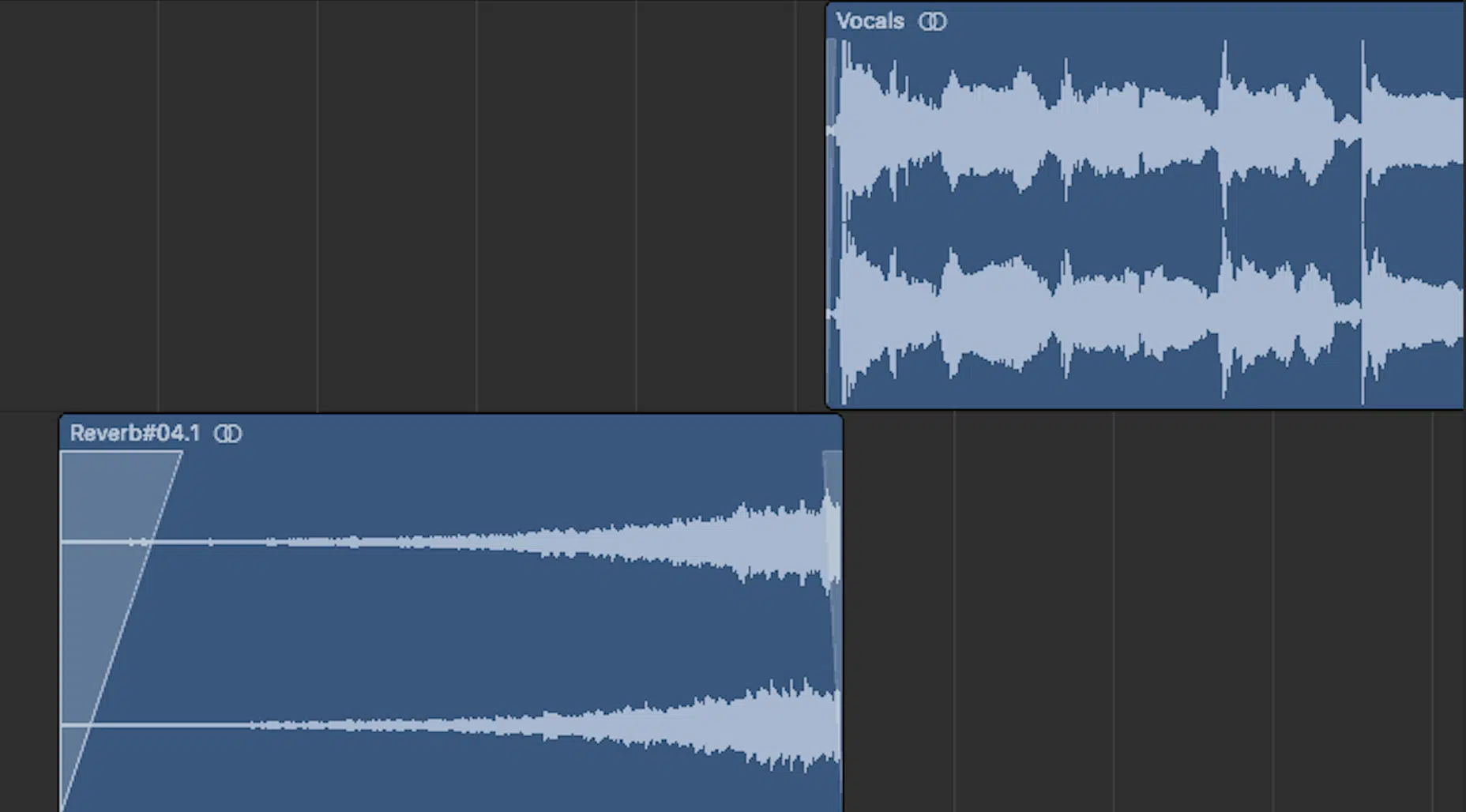
Reverse reverb can add a unique texture to instrumental tracks, especially when heard on lead guitar lines or atmospheric synth pads.
By reversing the reverb tail, you create a sound that builds up to the note.
This adds reverb tension and release to your instrument in a way that standard reverb cannot.
This effect works particularly well in genres like:
- Ambient
- Electronic
- Shoegaze
- Experimental audio
This is because, with these genres, the sonic landscape plays a particularly vital role in the overall vibe of the track.
A well-placed reverse reverb can turn a simple melody or chord progression into something more intriguing and immersive.
Tips for Mastering Reverse Reverb
Mastering reverse reverb requires an understanding of its nuances and how it interacts with other elements in your mix. It’s about striking the right balance to enhance the track’s overall feel. So, let’s get into it.
-
Adjusting Decay Time and Reverb Tail
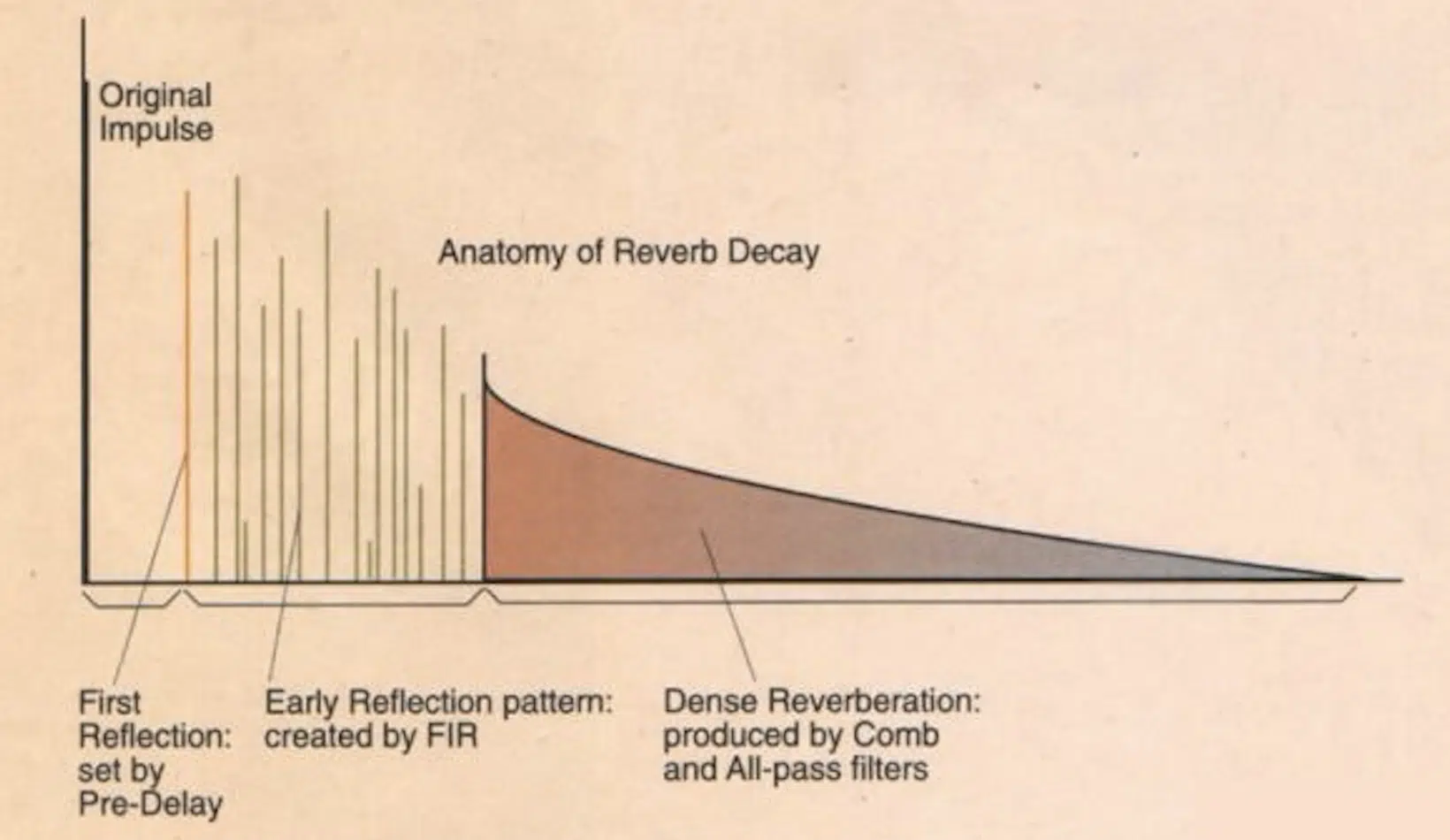
The decay time of the reverb is crucial in shaping the reverse effect.
Longer decay times create a more dramatic and drawn-out reverse reverb.
This can be very effective for creating an atmospheric backdrop or for use in breakdown sections of a song.
Shorter decay times result in a more subtle effect, suitable for adding a hint of reverse reverb without overwhelming the track.
Experimenting with different reverb tails can also add variety to your sound 一 allowing you to tailor the effect to the specific needs of each track.
Which, we all know, is super important to stand out and captivate new listeners.
.
NOTE: Led Zeppelin’s Jimmy Page masterfully used reverse reverb to create iconic soundscapes that continue to influence music today.
-
Balancing Reverse Reverb with Other Effects
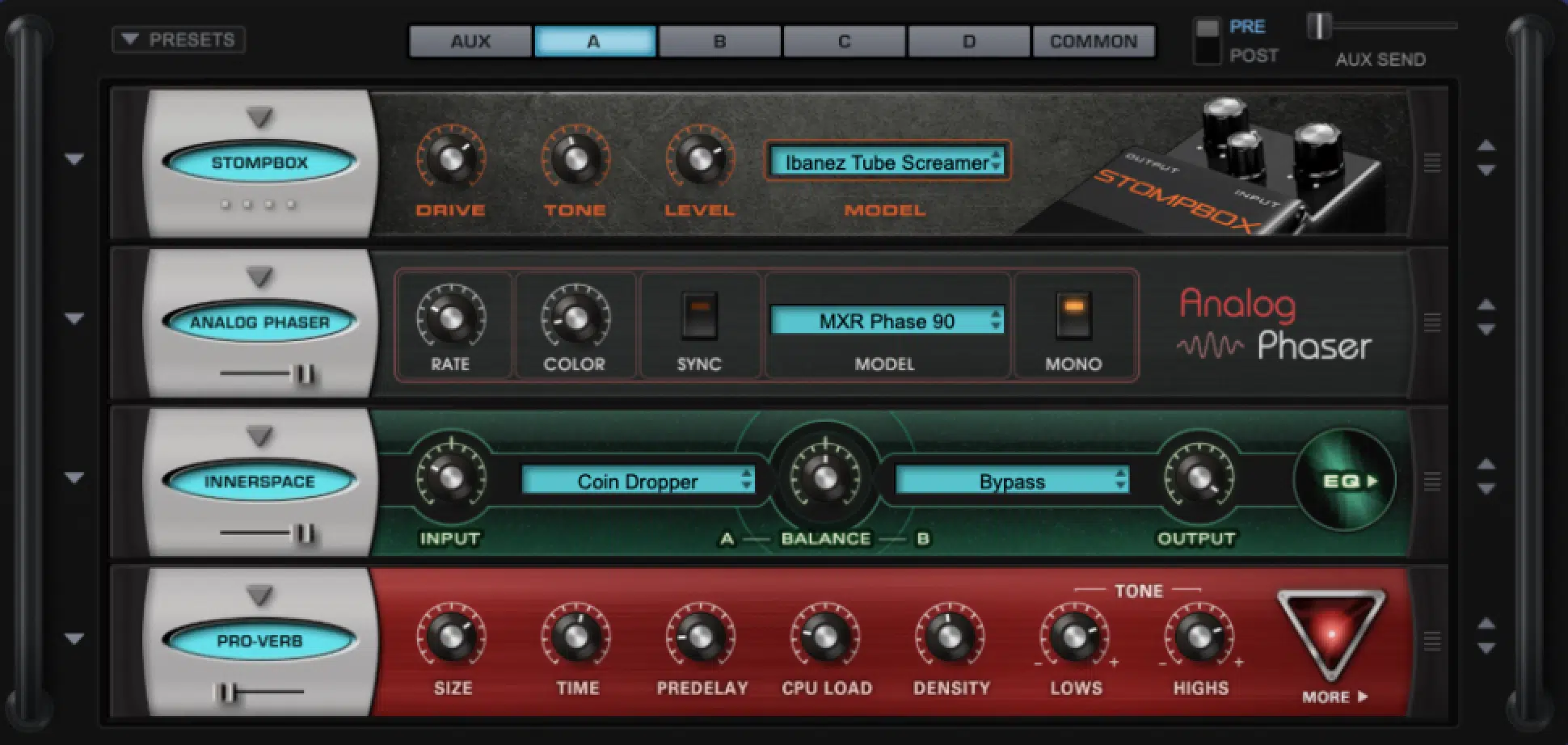
Integrating reverse reverb with other effects, especially delay, requires a careful approach to achieve a harmonious mix.
The interplay between reverse reverb and delay can create an ethereal, layered texture 一 enhancing the overall depth and complexity of your track.
For instance, applying a short delay before the reversed reverb can lead in to intriguing rhythmic patterns (especially in vocal tracks or lead guitar parts).
This technique, often used in genres like ambient or psychedelic audio, adds a surreal quality to the sound.
Careful manipulation of delay settings, like feedback and time, along with the reverb tail, ensures these effects blend seamlessly without muddying the mix or having any other audio issues occur.
The key lies in the balance, like most things music production.
- Too much delay 一 Can overshadow the subtleties of the reverse reverb.
- Not enough delay 一 Might fail to bring out its full potential.
Consider Pink Floyd’s use of these techniques for creating their legendary soundscapes.
Experimenting with different combinations, such as a longer delay time with a shorter decay time on the reverse reverb, can produce unique results.
Remember, the goal is to enhance the track’s texture without overwhelming the original recording or the other instrumental parts (like guitars).
-
Experimenting with Reverse Echo and Regeneration

Reverse echo, a variant of reverse reverb, involves applying a reversed delay effect to a track, creating an intriguing pre-echo effect.
This technique, where echoes seem to anticipate the main sound, can add a dramatic and unexpected element to your music.
NOTE: It’s particularly effective in creating suspenseful build-ups or for highlighting specific parts of a vocal or instrumental track.
Imagine the echoes leading into a powerful guitar riff or accentuating the climax of a song; this effect can be mesmerizing.
Adjusting the echo’s decay time and mix level allows for fine-tuning this effect 一 ensuring it complements rather than overpowers the track.
Reverse regeneration takes this concept further by adding feedback to the reverse echo, creating a loop of sound that evolves over time.
This can produce a swirling, almost hypnotic effect and add a much-desired layer of complexity to your sound.
Bands like My Bloody Valentine have effectively used such techniques to create their distinctive shoegaze music sound.
The key is to experiment with different levels of feedback and delay settings to find the sweet spot that enhances your music’s mood and feel.
While experimenting, it’s essential to monitor the overall impact on your mix.
Excessive reverse regeneration can lead to a cluttered and overwhelming sound, especially when combined with other effects like tremolo or modulation.
Striking the right balance will ensure that each element of your track (from the dry sound to the most complex effect) work together harmonically.
-
Using Gated Reverbs for Dynamic Sounds
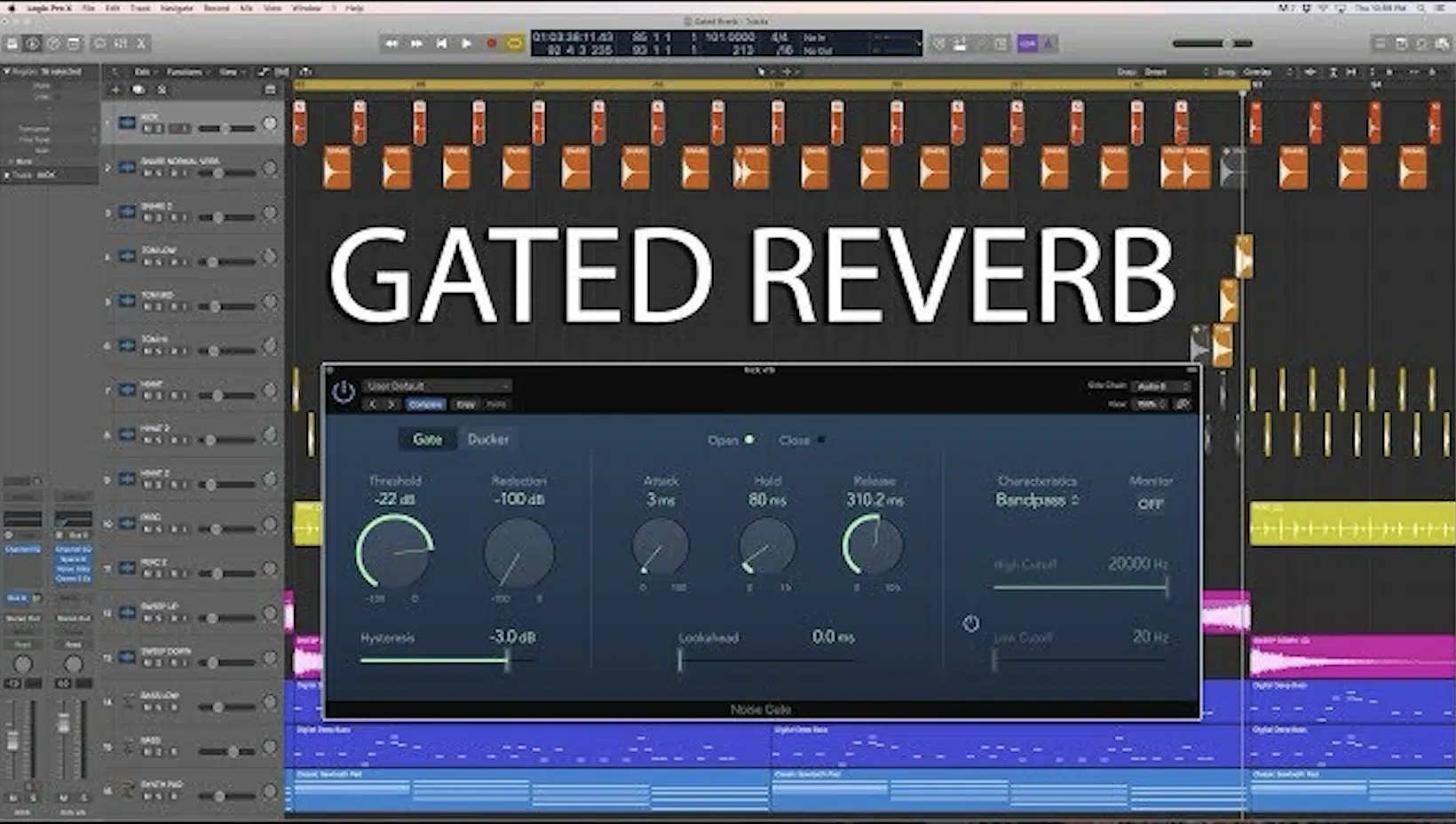
Gated reverbs, when combined with reversed reverb, can produce powerful and dynamic sound effects.
A gated reverb, by abruptly cutting off the reverb tail, creates a sharp contrast with the swelling nature of reverse reverb.
This combination can be particularly effective on a percussion instrument or snappy synth lead; giving them a punchy, prominent presence in the mix.
For early example, applying a gated reverse reverb on a snare drum can make it stand out in a busy mix.
This will provide you with a crisp and distinctive sound that cuts through other layers.
The technique involves setting the gate threshold so that the reverb is cut off at a specific point 一 creating a sudden silence that can be quite dramatic and intriguing.
Experimenting with the gate’s release time and the reverb’s decay can yield various textures, from sharp, staccato-like effects to smoother, more blended sounds.
Bands like U2 and Peter Gabriel have famously used gated reverbs to add a unique character to their drums.
They demonstrate how this technique can effectively shape the sound of an entire track.
Dealing with Overpowering Reverb Tails
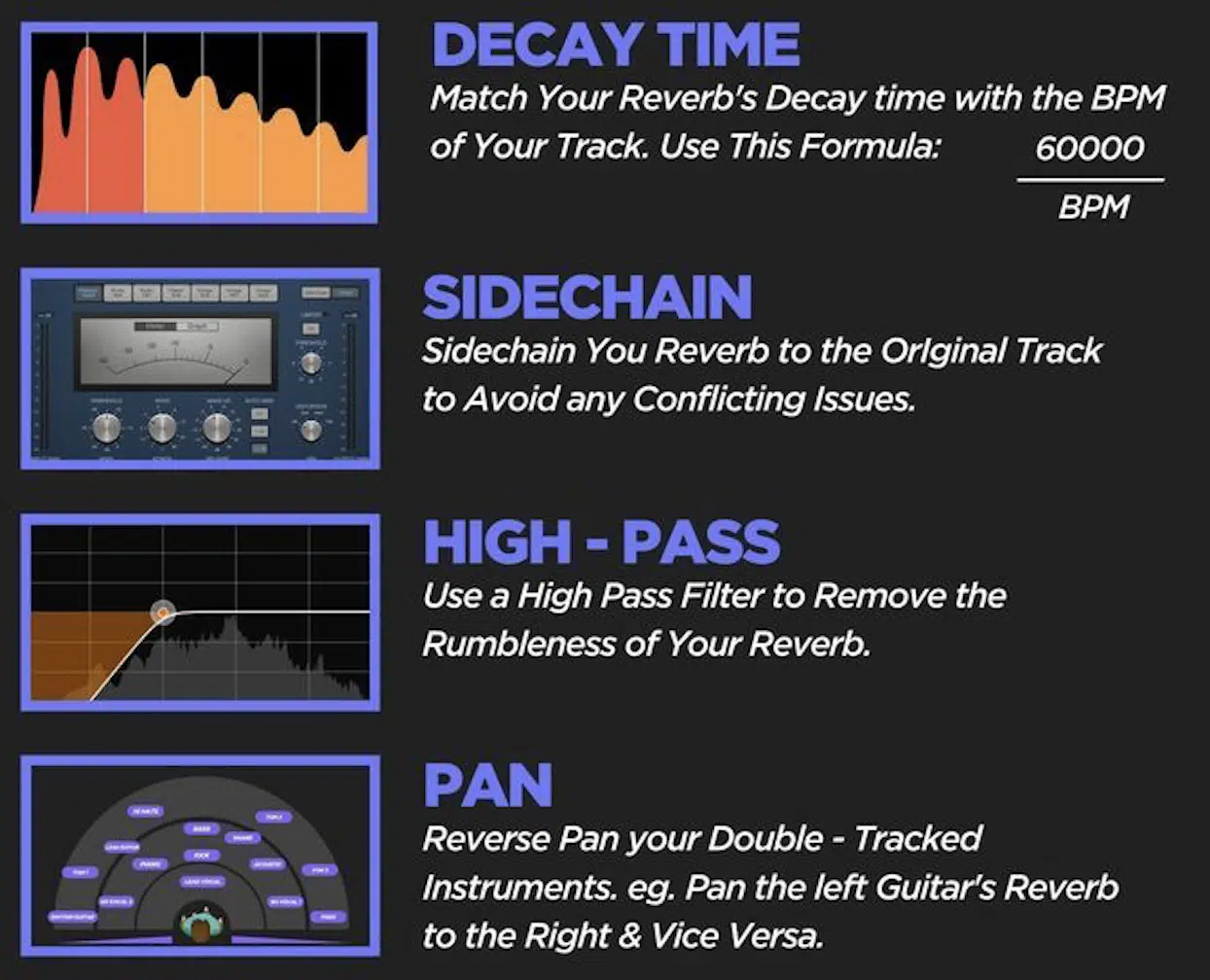
An overpowering reverb tail can often muddy a mix, blurring the clarity and impact of the original signal.
This is particularly true with reverse reverb, where the swelling effect can sometimes overwhelm the track.
The key to managing this is in the use of:
- Mix controls
- Careful EQing
- Active listening
By adjusting the balance between the wet and dry signals and selectively EQing certain frequencies, you can ensure that the reversed reverb adds depth and atmosphere.
All without compromising the track’s intelligibility (which is super important).
For digital music producers, automation can be a valuable tool in managing reverb tails.
Automating the reverb level to decrease during busier sections of the track and increase during more sparse sections can help maintain a clear and balanced mix.
This technique ensures that the reverb enhances the track dynamically 一 complementing the ebb and flow of the audio rather than competing with it.
Remember, the goal is to use reverse reverb to enrich your sound/mix, not to dominate it.
Bonus: The Best Reverse Reverb Pedals & Their Impact
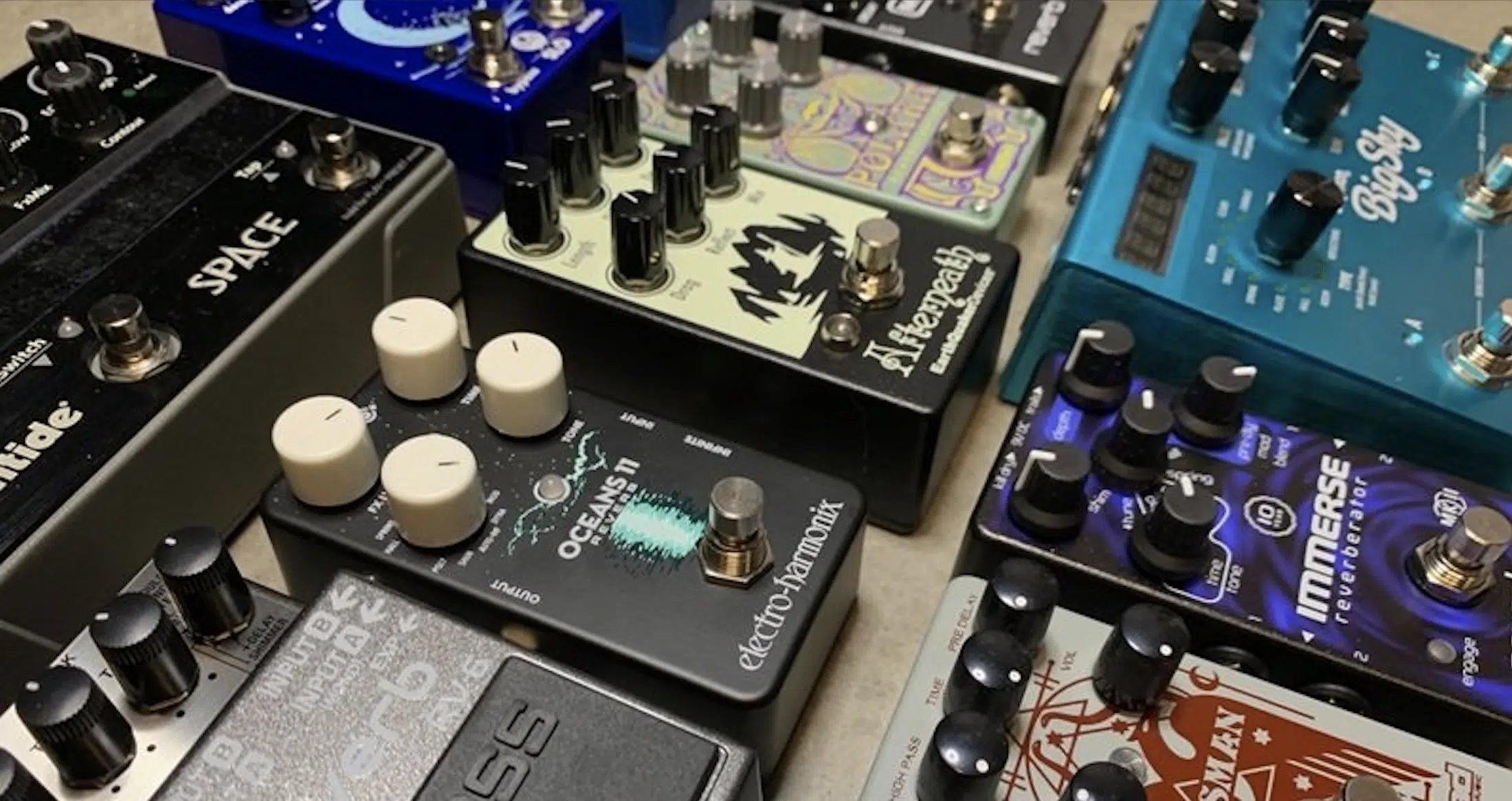
The best reverse reverb pedals have significantly impacted how musicians, producers, and audio engineers use this effect.
These reverb pedals, offering a range of settings and controls, make it easier to create and manipulate reverse reverbs in a live setting.
They provide instant access to the effect, allowing for real-time adjustments and experimentation.
The best reverse reverb pedals offer a variety of controls such as:
- Decay time
- Mix level
- Sometimes even tone & feedback controls
This versatility means you can tailor the reverse reverb to fit perfectly within your track, whether you’re working on vocals, guitars, or synthesizers.
When choosing a reverse reverb pedal, consider how it interacts with other effects pedals and the overall tonal quality it adds to your signal chain.
Some effects pedals are designed to provide a subtle enhancement 一 while other effects pedals can completely transform the sound.
Reverse reverb pedals can offer everything from ethereal ambience to intense, otherworldly tones.
NOTE: One of the best reverse reverb pedals right now is the DigiTech Polara Reverberator (anything by DigiTech, really).
-
Digital Software Alternatives
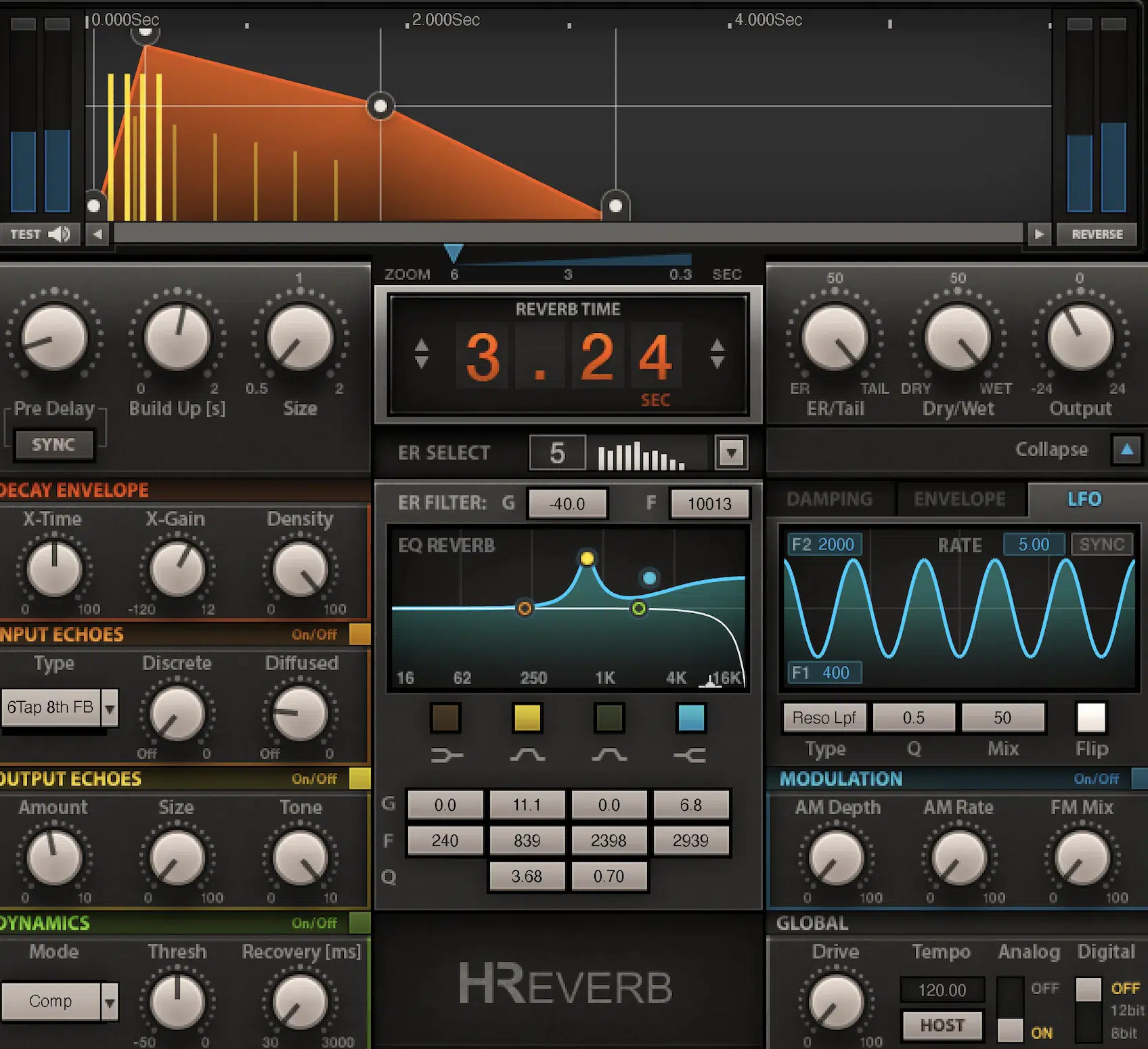
For digital music producers, software alternatives to a reverse reverb pedal offers even greater flexibility and control.
Digital audio workstations (DAWs) often come with built-in reverse reverb effects that can be manipulated to create reverse reverbs/reverse effects.
Or, you can opt for specialized plugins, like Waves H-Reverb (above), that offer more advanced features.
These software solutions often provide more precise control over the effect, allowing you to, with greater accuracy, play around with parameters like:
- Pre-delay
- Room size
- Diffusion function
This precision makes it easier to integrate the reverse reverb seamlessly into your mix 一 ensuring it enhances rather than overwhelms the track.
NOTE: In addition to pedals and software plugins, incorporating a rack unit with reverse reverb capabilities can offer unparalleled control and sound quality.
This makes it a valuable addition to any professional music production setup.
Reverse Reverb: Final Thoughts
Mastering reverse reverb is an invaluable skill for any music producer looking to elevate their craft.
We’ve covered how it can transform vocals and instrumental tracks 一 adding depth and a unique character to your music.
As well as broke down various techniques in which to enhance your mix and sharpen your production skills.
By adjusting decay times, balancing it with other effects, and experimenting with innovations like reverse echo, you can create soundscapes that truly stand out.
To truly understand this unique effect, you need to practice and refine your skills, and this Free Hip Hop Drum Kit is the key.
This kit, including over 50 proper, polished, and perfectly processed drum samples and loops, is created by expert beat-makers and sound designers.
It’s an ideal resource to experiment with the reverse reverb techniques we covered today.
Use these high-quality sounds to test out different reverse reverb settings, blend them with your tracks, and see how they transform your music.
Remember, the journey to mastering reverse reverb involves experimentation and continuous learning.
With the insights and techniques from this article, you’re well on your way to creating compelling, professional-sounding music that captures new audiences and tops the charts.
Until next time…







Leave a Reply
You must belogged in to post a comment.